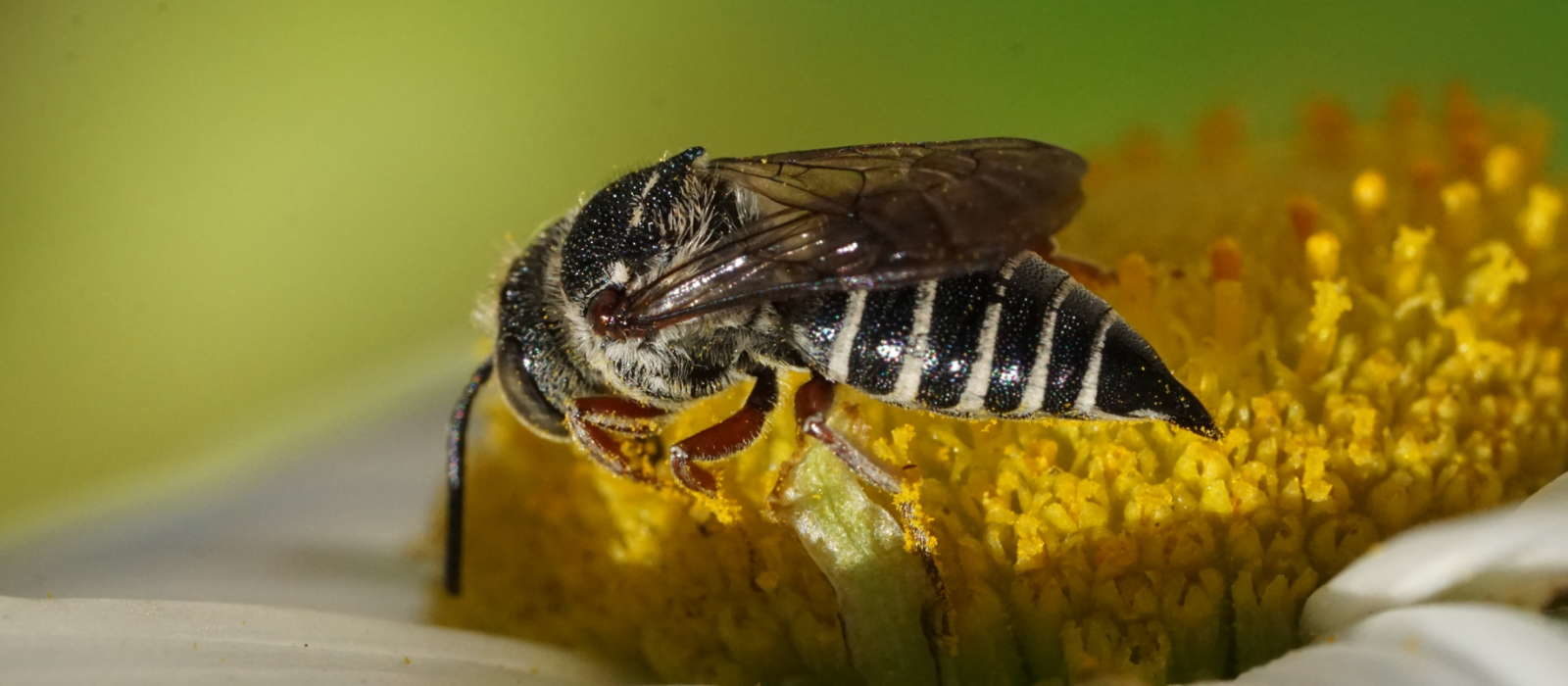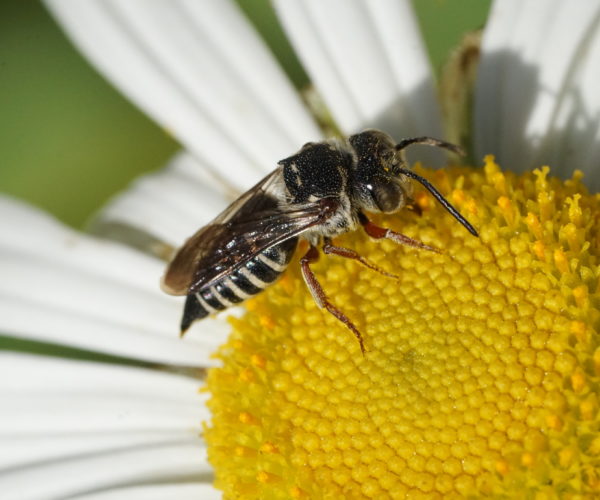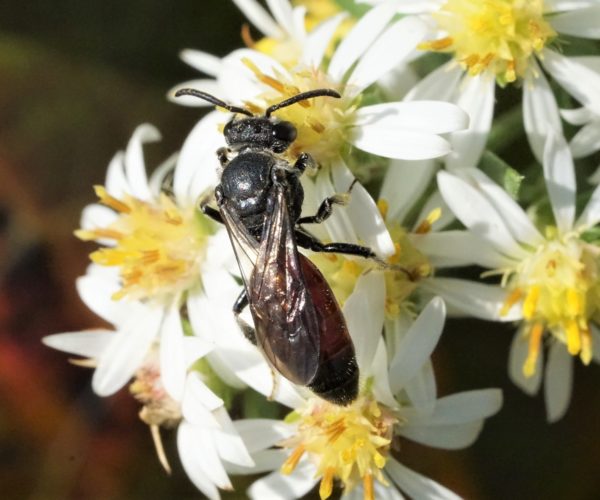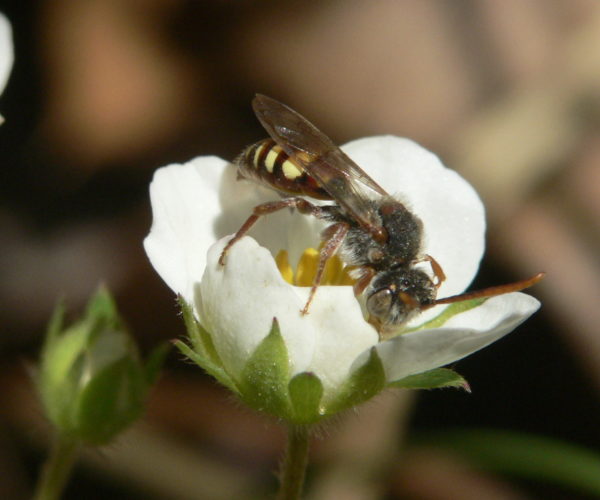Cuckoo Bees: home is where you find it
Because of their role as pollinators, bees rank among the most important insects for both agriculture and ecology. Bees – the epifamily Anthophila – are far more diverse than the casual observer would suspect. More than 180 species are known from Martha’s Vineyard, many of which exhibit ecological specialization: association, for example, with particular flowers, particular habitat types, or other insects.
Some of the most striking examples of bee specialization are found among the so-called “cuckoo bees.” Cuckoo bees are nest parasites, laying their eggs in the nests of other bee species. The female cuckoo bee may remove the host’s eggs or larvae when she lays her own eggs, and when it hatches, the cuckoo bee larva feeds on the pollen that the adult female host bee collected for her own offspring. (The host eggs or larvae may be consumed as well, if the female cuckoo bee hasn’t already ejected them.)
Such nest parasitism has evolved many times in multiple bee families, and cuckoo bees of various sorts represent a significant portion of overall bee diversity (about 25%, in the case of Martha’s Vineyard). Cuckoo bees may parasitize the nests of close or distant relatives, and nest parasitism is found both among social bees and solitary ones. But the host/parasite relationship is generally a specialized one: a given species of cuckoo bee will parasitize only one or a small number of host species. In some cases, cuckoo bees associate with hosts that are themselves highly specialized: Nomada rodecki, for example, has been proposed as a parasite of Melitta melittoides, which is strongly associated with flowers of the wetland shrub Lyonia.
Because they don’t need to provision nests, female cuckoo bees lack the specialized hairs that other bees use to transport pollen. However, adults of both species visit flowers just like other bees for their own sustenance. Many cuckoo bees have evolved adaptations, such as a tough or coarsely sculpted exoskeleton, that make them resistant to the stings of outraged host bees.
One important group of cuckoo bees on Martha’s Vineyard is the genus Coelioxys, “sharp-tailed” or “cuckoo leaf-cutter bees,” in the family Megachilidae. Typical leaf-cutter bees nest in tunnels or cavities, and the females cut neat circles from leaves which they use to separate larval cells within the nest. Female cuckoo leaf-cutter bees generally have hardened, pointed tips on their abdomens, which they use to break through the hardened mud that the female hosts use to seal their nests. A female eight-toothed cuckoo leaf-cutter bee, Coelioxys octodentatus, was recently photographed in Oak Bluffs, furnishing a first Vineyard record for this species (you can view the iNaturalist observation of this bee here).
The cuckoo bee genus Sphecodes, sometimes called “blood bees” because many species have reddish abdomens, is well represented on Martha’s Vineyard, with more than a dozen species known from the Island. In the family Halictidae (“sweat bees”), most Sphecodes parasitize the nests either of their relatives in the genera Halictus or Lasioglossum, or solitary bees in the genus Andrena. Even more diverse on the Vineyard is the genus Nomada, colorful bees in the family Apidae (the same family as bumble bees and honey bees), with nearly 20 species documented. Many Nomada species parasitize solitary bees in the genus Andrena, though with all types of cuckoo bees, a lot remains to be learned about host species, general ecology, and field identification.
Because they aren’t adapted to carrying pollen, cuckoo bees are probably not very effective pollinators. And their parasitic lifestyles may appear bizarre or even disturbing from a human perspective. But these specialized insects are one of the many factors that determine whether or not a particular female of a host will be able to reproduce successfully and hence are part of the evolutionary pressure experienced by their hosts. Cuckoo bees, you might say, help shape the essence of the bee species they parasitize. So these unusual bees are well worth studying and conserving.
Matt Pelikan is the director of the Martha’s Vineyard Atlas of Life project at BiodiversityWorks.




